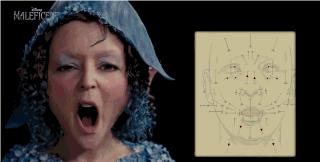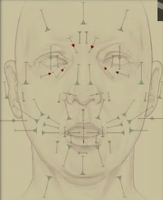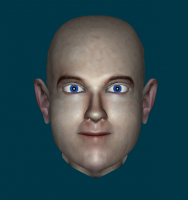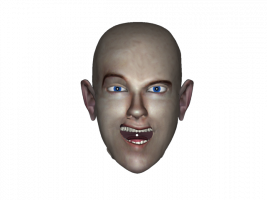-
Posts
21,649 -
Joined
-
Last visited
-
Days Won
119
Content Type
Profiles
Forums
Events
Everything posted by Rodney
-
I might have misunderstood your question. If you want to export to a custom format you might want to investigate the Software Development Kit (SDK). With it you can write custom plugins to import/export to any format.
-
Someone that is more familiar with gaming should chime in here but in the interim... There are plugins for a variety of formats used in gaming and other formats can be achieved through dedicated converters from one of the primary formats. Standard wizards/plugins for conversion include: .LWO .3DS .OBJ .X Note that in an Action or Choreography an entire sequence of models can be exported. The formats most often used for gaming (that I am aware of) are .X and .OBJ. Of course the ideal format to export to will depend on the gaming engine you target. Check out the Game Development forum area for more specific information. Here's a screen cap of the primary export formats:
-
I'd be glad to be wrong about this but I don't expect to see v19 until 2015. So... v19 is still a ways away.
-
There have been several attempts to dig deep into particle hair but all of that information has never been compiled. I'm currently collecting what can be found and shared in 'The Hair Salon'.
-
You get the current version as of the time you purchase (currently v18) If purchasing the non-expiring $299 offer (just to be clear... that's the only $299 offer there is) it does not expire. So if you purchase v18 you can continue to use v18 for as long as your system will run it (i.e. theoretically forever) You'll have to contact Hash Inc to ask about special offers and discounts or visit their booth at an upcoming trade show. The $79 yearly subscription is discounted $20 off of the old subscription rate of $99. Technically all purchases are subscriptions. The $299 sub just doesn't expire.
-
I can imagine it. My mouse occasionally has issues that slow things down to a crawl and I'm about to jettison it. Without knowing more about your specific project or setup I can't even begin to assess the specifics of your situation. I do know that After Effects requires considerable free/dedicated memory and I don't recommend using it without 16GB of RAM. Last year I was trying to operate AE on less than 8GB (probably not even 4GB given what Win 8 requires to begin with and my tendency to keep applications open) and ouch... that was painful. With 12GB or more AE has been pleasantly responsive although as with all graphics intensive operations the more RAM the better.
-
While relevant I tend to discount processing benchmarks/comparisons from one release of a product to another on the basis that they aren't often fairly weighted comparisons; the older measurements generally taken from one set of data versus the newer with another set of data. As you are technically minded I've no doubt you reduced or at least accounted for the variation but that is where many a comparison fails. An excellent, but technically minor example of smarter ways of processing is that which is found in Adobe Generator*. That's the underlying approach that allows the naming of PSD layers in Photoshop to automatically generate other imagery based on the naming of those layers alone. (i.e. If you want a jpeg, png and a 25x25 png thumbnail just name your layer appropriately and it'll create them each time you save. Want the same thing for a group of layers... name a set of folders appropriately and drop the layers inside the appropriate folder as needed to get instant conversion and formatting upon saving.**) The processing/rendering of images then becomes... as it should be... a secondary and perhaps even trivial consideration. *Not that I anticipate such a thing but as Adobe Generator is open source it could be leveraged by A:M to process/format/convert images through Photoshop without even opening Photoshop. **Pay attention PSCC users... that second part with the folders is a tip I haven't seen anywhere else!
-
Our topic has moved far away from that of MS Surface Pro 3 and we probably should move Adobe related topics to another location. The importance of resistance cannot be overstated. Resistance... even to good ideas... is important because it grounds fleeting and ethereal projections into reality. If everyone immediately subscribed to AdobeCC that would certainly be strange. The issue then is one of whose reality rules the day. This personal reality then is key. If someone has no use for the Adobe software it wouldn't make a lot of sense to purchase that software. If on the other hand one can well take advantage of what Adobe is offering then an argument can be made for early adoption rather than later. If one simply cannot fathom any potential benefit then it would be more a matter of education. I have been tempted for a long time to start up a Adobe Users Group forum to incrementally demonstrate some of the varied benefits to using Adobe products with A:M but I've resisted that for a number of reasons. My ultimate goal in such a thing would be to demonstrate how best to use A:M in conjunction with Adobe products but also demonstrate the most direct methods to accomplish the same/similar thing in A:M. The big difference being to outline alternatives for those that for reasons of their own have chosen a different reality (This includes Adobe!). That and to smooth out the path for A:M Users to extend their productiveness (through Adobe should they so choose) to the greatest extent possible. I have stated for the record that I believe A:M Users will benefit by subscribing to AdobeCC (the ins and outs of which could be debated at length). But the burden of proof for the initial statement of benefit is on me. So I have two basic options 1) demonstrate the benefits 2) keep my opinion to myself and let the chips fall where they may. I'll state this for the record as well: - Adobe product user experience is far inferior to that of A:M. At times it is quite painful. - Navigating the interface of the various Adobe products is no where near as intuitive as with A:M. - I'm not thrilled with the current focus on mobile technology but acknowledge that's where the majority of tech is heading. There are however some very useful benefits (ex: Adobe Edge Animate) Adobe is definitely moving in the right direction and they will never arrive at a final destination. That's the nature of software/innovation. Having said all that, I believe the best means of getting where Adobe needs to be is along the path of their current trajectory.
-
Given the obvious constraints I'm curious what a true solution might look like. Most people would say, "Just let me keep my copy of the software active forever" but that has a direct disincentive to innovation. At issue is the fact that we as consumers/users of a product expect innovation but 1) Don't know what we want 2) Don't want to pay for it. I'll make no bones about it that the cost of subscribing to Adobe CC is too much for me but I also know a good deal when I see it and having access to all the Adobe products represents an incredible deal. Aside: For those that might have recently blinked, the 2014 release of Adobe CC has just been released (as of yesterday I believe). For those that are subscribed go get your updates! Several concerns have been dealt with prior to and with these latest releases. Other concerns are being worked on behind the scenes. Full solutions don't just appear out of nowhere but must be carefully planned and programmed into place. One for instance is that multiple releases can now be installed on the same computer system. This is a big deal in aiding the user in their effort to update older assets and it directly addresses the question of what folks can do when their older software is no longer compatible with the latest and greatest release. Fact: Folks want everything but the cost of owning everything is too high. This is a problem that must be dealt with and will be eventually. And here's the thing: The cost of subscribing to/purchasing all software is coming down... even while every major software label is moving to this new form of distribution... usually short subscription based... and those costs will continue to decrease. But in a major twist of irony the lowering of cost depends almost entirely upon adoption of the new methods of delivery which those with shorter term vision steadfastly resist. Bottom line: We cannot expect software companies to give their products away for free (if they do that's at their discretion). With every increase in quality and innovation the software companies have been putting themselves closer to going out of business with every new release. Consumers are too easily satisfied with dated releases and increasingly had less and less incentive to upgrade. To stay in business... much less innovate... something had to change. And it's a problem that largely has to be tackled on a case by case basis.
-
Given the obvious constraints I'm curious what a true solution might look like. Most people would say, "Just let me keep my copy of the software active forever" but that has a direct disincentive to innovation. At issue is the fact that we as consumers/users of a product expect innovation but 1) Don't know what we want 2) Don't want to pay for it. I'll make no bones about it that the cost of subscribing to Adobe CC is too much for me but I also know a good deal when I see it and having access to all the Adobe products represents an incredible deal. For those that might have recently blinked, the 2014 release of Adobe CC has just been released (as of yesterday I believe). For those that are subscribed go get your updates! Several concerns have been dealt with prior to and with these latest releases. Other concerns are being worked on behind the scenes. Full solutions don't just appear out of nowhere but must be carefully planned and programmed into place. One for instance is that multiple releases can be installed on the same computer system. This is a big deal in aiding the user in their effort to update older assets and it directly addresses the question of what folks can do when their older software is no longer compatible with the latest and greatest release. Folks want everything but the cost of owning everything is too high. This is a problem that must be dealt with and will be eventually. The cost of subscribing to/purchasing all software is coming down... even while every major software label is moving to new forms of distribution... usually short subscription based... and *I anticipate* those costs will continue to decrease. But in a major twist of irony the lowering of cost depends upon adoption of the new methods of delivery which those with shorter term vision steadfastly resist. Bottom line: We cannot expect software companies to give their products away for free (if they do that's at their discretion). With every increase in quality and innovation the software companies have been putting themselves closer to going out of business with every new release. Consumers are too easily satisfied with dated releases and increasingly had less and less incentive to upgrade. To stay in business... much less innovate... something had to change. And it's a problem that largely has to tackle on a case by case basis.
-
You may be glad to know that isn't the case. Of course... updating the software... (through the creative cloud interface or through each programs update function) requires an internet connection but then again you'd have to be connected to the internet to download that update anyway. Folks often confuse 'the cloud' aspect of CC with running of the software. The cloud app which lets you know if there are updates available to install needs to connect to the internet to know if there are new updates but one need not run that application to run the currently installed CC software (Illustrator, Photoshop, Dreamweaver, After Effects, Premiere, Flash, Audition, Acrobat, etc.). As with most software subscription services, after installation one need not be in the cloud in order to routinely run the software. I suppose the software might periodically check against whatever subscription expiry date is embedded but certainly not every time the software is launched. Edit: I will guess that those who pay per month (i.e. a credit card is charged monthly) can expect to have the software validate that a payment has been made each month. When paying a year in advance there isn't much of a need for the software to phone home as often. I've read an online validation for annual subscribers is run every 99 days but it is unlikely that any CC subscriber will be offline for more than 99 days. But that's not the reason I recommend the yearly subscription... I recommend subscribing annually because it provides a substantial discount... and for us poor folks... it's too easy to forget to reserve the funds and/or forget to make a payment each month.
-
Happy Birthday Papa Bear.
-
Happy Birthday Martin! Thanks for the outstanding software!
-
Happy Birthday, Willi! Hope it was a great one.
-
Excellent point Mike. My initial response in this topic was to suggest that things aren't as difficult as some make them out to be. My (theoretical) suggestion being that those simple lines on the reference image should be sufficient to animate a (realistic) face. Are there challenges/difficulties? Certainly, but none that cannot be surmounted given enough time and innovation. There is a TON of stuff going on behind the scenes and the experts are paid pretty well to research and develop. But we should keep in mind that they aren't building rigs just for the present project but are often solving deeper issues they know they will some day ahem... face.
- 12 replies
-
- Facial Rig
- Rig
-
(and 1 more)
Tagged with:
-
I note that the lip sliders on the reference image aren't moving (ref: Maleficent fairy gif animation above) That implies the lip movement is being animated or at layered in separately. To see what I'm talking about watch the reference image focusing on the lip sliders and wait for it to cycle through the pursing/exploding of the lips on the left. Note that sliders in that area do not activate much less move. Smoke and mirror... all fx, even the behind the scenes stuff designed to sell the process... smoke and mirror. If motion tracking can get the basic movement into place that would relieve the animator of some of the tedious stuff they'd otherwise have to do.
- 12 replies
-
- Facial Rig
- Rig
-
(and 1 more)
Tagged with:
-
A new trailer is out for 'Home'. This shows that the movie will be quite different than the previous trailer implied, which seemed to focus fully on the aliens. (well, yeah... they hadn't yet reached earth) Not necessarily good or bad but very different than I was expecting based on the original trailer.* joNsI90c7OM Home Trailer *Minor thought/observation: Whereas the first trailer invited everyone to empathize with the aliens the focus on the latter appears to narrow that opportunity to syncing with one of two characters (the alien or the girl... it's unlikely although not impossible that many will sync with the cat). I assume there will be additional opportunity to see more of ourselves in the other aliens in the movie but they sure aren't there in this trailer. One of the fun anticipatory elements of the initial trailer was that every planet the Boove encoutered was uninhabitable if not doomed in part because the alien Boove had accidentally chanced upon it. Thereby suggesting the Earth's days are numbered because of their arrival. This new trailer appears to point the finger to the one alien 'O' for those catastrophes. How all that plays into the movie, if at all, we'll have to wait and see.
-
From the same folks that brought you the Snapper Rig System that Marcos posted is another slightly less realistic facial setup: 7bX0qpsLfpE I'm sure the system is cheap so buy two. And here's one with a considerably more caricatured face: AVqyZOdTV9w
- 12 replies
-
- Facial Rig
- Rig
-
(and 1 more)
Tagged with:
-
The content had passed by so quickly during my first viewing that I hadn't really noticed that parts of the reference image were moving. Here the image is in context and slowed down by half. For more and the ability to watch in higher rez, here's a link to the original presentation by Mike Seymour at fxguide: http://www.fxguide.com/featured/maleficent/ Obviously the average person doesn't have access to the huge scanners and such used to create realistic faces but we do what we can do.
- 12 replies
-
- Facial Rig
- Rig
-
(and 1 more)
Tagged with:
-
Here is an interesting image... taken from a video outlining Disney's digital work on cg characters from the film 'Maleficent'. It looks like something from Paul Eckman but I don't know what the actual genesis of the image is. For lack of a better term and until better educated, I'll call the tracks showing where muscle tension is pulled/released facial paths although 'tracks' might be just as appropriate. I assume most of these are indicative of the insertion/origin and termination point pf muscles on the face althought I'm not quite sure what to make of the eye paths.
- 12 replies
-
- Facial Rig
- Rig
-
(and 1 more)
Tagged with:
-
I cannot confirm or deny. I will say this though: The banners are always open to cool animated content (and still imagery) as is the filmstrip at the top of the forum. What better way to use A:M than to put it to work creating something to highlight what you are currently working on. And they are collectible! *If I had made it, it would have been made entirely in A:M, with only the conversion from .MOV to gif in another program. I love how A:M can render to any size image required.
-
It would take some doing but an upgrade to Ed's Head might be in order. For the brave and bold here's a starting place with Ed's Head v2 (which I don't think has been updated since circa v11): If we could get ahold of the same textures used for that setup I think we could come close to a reproduction. Eds_head_v2.zip
- 12 replies
-
- Facial Rig
- Rig
-
(and 1 more)
Tagged with:
-
This familiar character was modeled by the highly talented Ken Heslip. We miss you Ken! HeroDude.zip
-
This is a Star Wars fan film put together by two school mates over the period of six years. The film is in french with subtitles and contains some harsh language not usually seen in Star Wars films. hChZObLRPRc Of interest, there are hundreds of stormtroopers in the film but no one wore a stormtrooper costume. All appearances where 3D models animated and composited into the film. There are several making of videos that are well worth reviewing as well. Here's their website that has links to several: http://1k0.blogspot.fr/2014/03/versus-twts-making-of.html Here's one thatperhaps outlines the effects breakdowns best: CG4AV5UIk-M The general thought here is that animating humans isn't always the best approach when actors can perform that element through live action instead. Special Effects and digital actors can then fill in as necessary. It should be also noted that the majority of filmwork like this, to include compositing, can be accomplished in A:M, although dedicated compositors are generally preferred for chroma key, masking and motion tracking.















